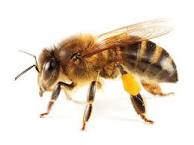HOW TO GET RID OF CARPENTER BEES

Carpenter Bees Xylocopa species Carpenter Bee Carpenter bees, also known as wood bees, bear a resemblance to bumblebees but have a hairless abdomen. These solitary bees are named for their nesting behaviors of tunneling into wood. Carpenter Bee Habits Long Island, New York Eastern carpenter bees are all black, with yellow hair on their thorax and a smooth, shiny abdomen. Apart from bumblebee queens, they are the largest bees native to the United States. Unlike bumblebees, carpenter bees are solitary insects and do not live in large colonies. Female carpenter bees bore tunnels into wood to construct nesting galleries and deposit the chewed frass outside their burrows. The nesting behavior of carpenter bees weakens and damages wooden structures. Although solitary, carpenter bees create nests close to each other. Male carpenter bees do not possess a stinger but vigorously guard the nest's entrance, causing alarm in humans residing nearby. Carpenter bees hibernate during...
